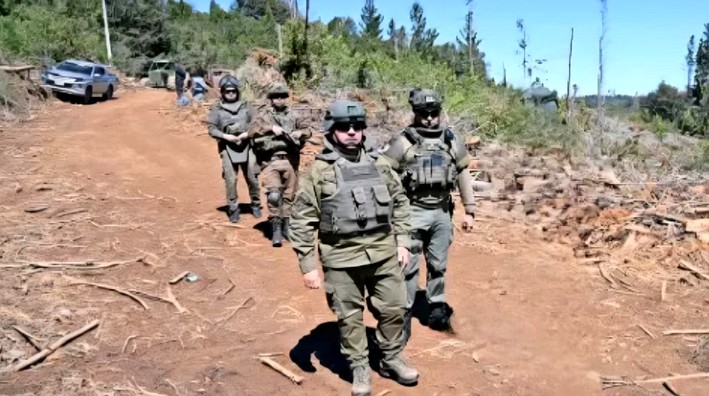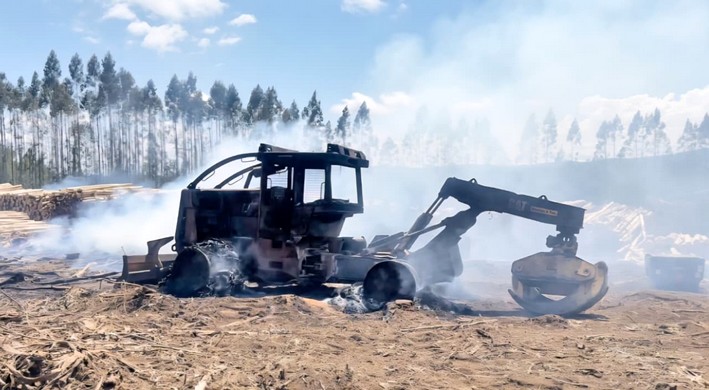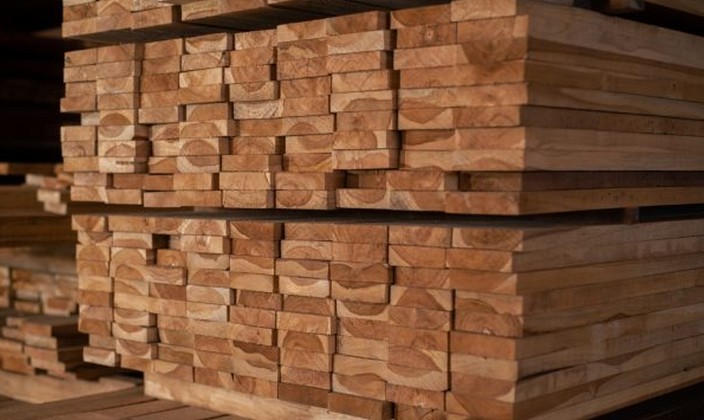Wildland Firefighters, the Frontline in the Battle Against Fires
The summer of 2023 will not be easily forgotten. The thousands of hectares destroyed by fires that affected from the Maule Region southward left a devastating scene. For weeks, thousands of people watched as their land, homes, and dreams were swept away by flames, which were finally controlled after days of uninterrupted combat by thousands of firefighters, aerial teams, and volunteers.
But how was this work carried out? Firefighters Claudio Salazar, Gabriel Grandón, and Erwin Flores, all with decades of experience in disasters of varying magnitudes and terrains, were on the frontlines this year—a year many have deemed the most complex emergencies due to the scale and simultaneity of the fires.
Their Motivation
Salazar is from Cauquenes in the Maule Region and works for WOF Chile, the company providing services to the forestry company Arauco in Concepción, Chillán, and Constitución.
He has been fighting wildfires since 1998, entering the profession at 18 after being convinced by a friend. The idea was to do something before joining the military, but he fell in love with the job and stayed to this day. "I believe the main motivation is being able to help people when their homes are at risk. When you do something to save lives or infrastructure, at the end of the day, I value this noble work, which until recently was poorly recognized," he reflected.
Additionally, he noted that it’s a highly dynamic job because he’s never in just one place, instead working in different fire zones, confronting varied terrains and situations. "Truthfully, you start feeling like a hero fulfilling this task, which ultimately motivates all of us firefighters to return every year, along with protecting natural resources and the country," he emphasized.
However, he acknowledged that this was a particularly tough season, covering a vast area and marking a different reality. In 2017, a large area burned, but there weren’t as many fires—just one major one, like the Las Máquinas fire in Maule, which consumed 150,000 hectares to the north. "We thought we had seen it all, as the fire wiped out several places, like Santa Olga, where I fought. It was a traumatic experience," he recalled.
After those events, there was some calm, thinking they had lived through the worst disaster in Chile’s wildfire history. However, this year saw simultaneous active fires in a single day. Six years ago, 2 or 3 fires stood out, but this year, many erupted within 24 hours. "So, honestly, when analyzing it, we hadn’t seen everything in 2017," he admitted.
He remembered that year his parents' house was nearly lost, but in 2023, at least in Maule, the situation wasn’t as severe as in Ñuble, Biobío, and La Araucanía.
"We thought we had seen it all, as the fire wiped out several places, like Santa Olga, where I fought. It was a traumatic experience."
Claudio Salazar.
Lessons
Regarding the lessons from this year’s catastrophe, Claudio Salazar said vulnerability was exposed due to the simultaneity of fire outbreaks. Although there are many resources from both private companies and the state, all were overwhelmed. "I think we must work more on teaching the public to act preventively because fires don’t just harm companies or forests—they harm families, and that’s what people must understand, in terms of thinking of others," he stressed.
Adverse Conditions
Meanwhile, Gabriel Grandón, from Los Álamos, recalled that after serving three months in the military, he applied at the Horcones plant in Arauco, where he was given the chance to become a wildland firefighter.
Training already existed through manuals that came with professional tools. Thus began his career, with his first fire being the containment of a blaze in the highlands of the Nahuelbuta Range. "When we arrived, there was only smoke, and they had finished their firebreak. We went to douse water in a task that took 14 days," he remembered.
Early on, tasks were few, and he waited for fires to occur, but starting in 1986, "I became more aware of reality. I realized the incidents weren’t just in my area but across the entire forestry company, and besides, I had taken on the role of brigade leader."
Regarding the aggressiveness of emergencies, he recalled that the 2017 fires were unique due to geography, timing, and the rural communities affected. However, he argued this year’s fires were more complex due to drought, climate change, and dwindling strategies for large-scale situations, making constant training necessary.
He added that more eucalyptus is now being planted than pine, which once served as a defense in certain areas. "Today, fighting fires is harder, but preparation is adequate. Yet climate change makes fuels more flammable. It’s complex, but humans must develop new strategies and tactics, along with partnerships with neighbors and companies, to face this reality," he proposed.
"Today, fighting fires is harder, but preparation is adequate. Yet climate change makes fuels more flammable."
Gabriel Grandón.
Complex Combat
In turn, Erwin Flores, originally from Callucupil, Cañete, and residing with his family in San José de Colico, north of Curanilahue, said that in 1991, he got the opportunity to work in the Arauco Forest Brigade through a service company.
With 32 years in the field, he started as a firefighter, then became a squad leader, ground brigade leader, and helitransport chief for 13 seasons, plus three as an aerial coordinator and four as a wildfire supervisor.
Thus, he noted that this year, the number of fires, their simultaneity, and the types of fuel available—combined with high temperatures—made fire spread faster, complicating containment. "On top of that, climate change led to rising temperatures, increasing drought and accelerating fires," he observed.
Based on his experience of over three decades as a firefighter, this year’s fires were the largest, affecting an enormous area.
Despite all this, Flores explained that while it’s high-risk work, safety measures and skilled brigade leaders make the job slightly easier—though it has grown heavier over time due to firebreak construction, extreme heat, smoke, and other factors.
Additionally, since they must follow schedules, shifts can last 10 to 12 hours with breaks, but given this year’s fire magnitude, they sometimes fought flames for 8 to 9 hours straight. "We returned to our bases exhausted, some of which are over two hours away. There are also night brigades that work all night and rest the entire next day," he shared.
But behind it all is the desire to help the community, as protecting a family’s home brings satisfaction, along with safeguarding nature. "That’s why it saddens us to see forests burn. For example, it pained me to see the landscape I once saw on my way to Santa Juana now destroyed. This affects us deeply," he concluded.

















